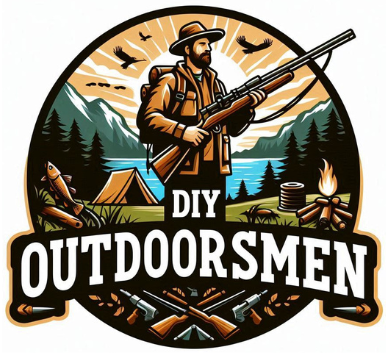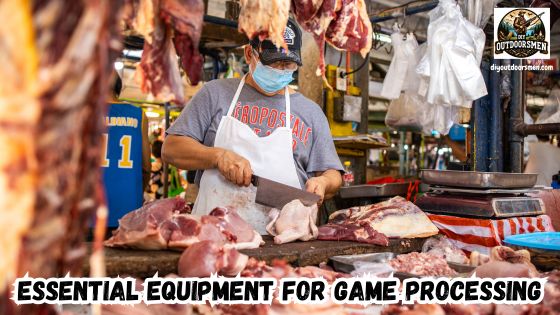Contents
- 1 Essential Game Processing Tools For Field and Home
- 2 The Basics: Must-Have Tools For Every Game Processor
- 3 Getting Started: A Quick Guide to Processing Game
- 4 Planning Your Setup: What To Consider Before Buying Equipment
- 5 Extra Tools That Make A Difference
- 6 Real-World Uses For Game Processing Equipment
- 7 Frequently Asked Questions
- 8 Start Processing With Confidence
When I butcher my own wild game, having the right game processing equipment makes this demanding job a whole lot easier. From field dressing right after the hunt to prepping packages for the freezer, every tool has its key role.
QUICK LOOK: Basic Must-Have Tools for Game Processing
- Knives: I carry at least three: a skinning knife, a boning knife, and a butchering knife. The skinning knife lets me remove hide easily, the boning knife separates meat from bone, and the butchering knife handles larger cuts.
- Cutting Board: A big, sturdy board gives you a clean, stable work surface and helps protect knife edges. I use a food-grade plastic board, since it cleans up fast and sanitizes easily.
- Meat Grinder: If you want to make burger or sausage, a grinder is a must. Electric models work fast, but hand-crank versions are great for smaller batches, especially off the grid.
- Vacuum Sealer: Vacuum bags keep my meat fresh in the freezer and prevent freezer burn. For anyone processing several animals a year, this is worth the investment.
- Freezer Packaging: I store meat in thick freezer paper or heavy-duty freezer bags. Labeling each package with the date and cut makes meal planning way easier.
- Meat Saw: When you’re working with bigger animals, a meat saw cuts through bone safely and cleanly. It’s a big help when breaking down elk, deer, or even wild hogs.
- Gambrel and Hoist: Hanging game with a gambrel makes skinning and quartering a breeze. A hoist system makes things simpler if I’m on my own or dealing with big game.
- Knife Sharpener: Dull knives are dangerous and make the job take longer. I always keep a sharpener ready so my blades stay in top shape all day.
If you’re considering processing your meat, having reliable gear on hand is crucial for both efficiency and safety. In this guide, I’ll talk you through the must-have equipment I use for game processing and share some hands-on tips that will make the job smoother—and way more rewarding.
Essential Game Processing Tools For Field and Home
Field-to-table game processing means everything from gutting and skinning in the field to butchering and packaging at home. Having the right equipment has a big impact, both on meat quality and safety. Over time, game processing has changed thanks to practicality.
Starting with simple knives, the process has grown to include grinders, vacuum sealers, and more. The growing popularity of hunting for food, rather than just for sport, has inspired many hunters like me to pick up these skills and invest in dependable gear.
The good news is, you don’t need fancy stuff. Just get set up with real essentials, and you’ll be set.
The Basics: Must-Have Tools For Every Game Processor
Whenever I get into wild game processing, I make a checklist of the basics. Here’s what I won’t go without:
- Knives: I carry at least three: a skinning knife, a boning knife, and a butchering knife. The skinning knife lets me remove hide easily, the boning knife separates meat from bone, and the butchering knife handles larger cuts.
- Cutting Board: A big, sturdy board gives you a clean, stable work surface and helps protect knife edges. I use a food-grade plastic board, since it cleans up fast and sanitizes easily.
- Meat Grinder: If you want to make burger or sausage, a grinder is a must. Electric models work fast, but hand-crank versions are great for smaller batches, especially off the grid.
- Vacuum Sealer: Vacuum bags keep my meat fresh in the freezer and prevent freezer burn. For anyone processing several animals a year, this is worth the investment.
- Freezer Packaging: I store meat in thick freezer paper or heavy-duty freezer bags. Labeling each package with the date and cut makes meal planning way easier.
- Meat Saw: When you’re working with bigger animals, a meat saw cuts through bone safely and cleanly. It’s a big help when breaking down elk, deer, or even wild hogs.
- Gambrel and Hoist: Hanging game with a gambrel makes skinning and quartering a breeze. A hoist system makes things simpler if I’m on my own or dealing with big game.
- Knife Sharpener: Dull knives are dangerous and make the job take longer. I always keep a sharpener ready so my blades stay in top shape all day.
Getting Started: A Quick Guide to Processing Game
Starting might seem overwhelming, but breaking it into clear steps keeps things manageable and safe. Here’s how I go about it:
- Field Dressing: Get started as soon as possible after the harvest to cool the meat and prevent spoilage. Use a sharp knife and gloves for safety and hygiene.
- Skinning and Quartering: I hang the animal using a gambrel, remove the hide, then divide the carcass into manageable sections using my butchering knife and saw.
- Butchering: On a large cutting board, I separate larger muscle groups, trim off any silver skin or fat, and then process steaks, roasts, or other cuts as I like.
- Grinding and Sausage Making: For burgers and sausage, I run selected trimmings through my grinder. When making sausages, a stuffer helps get consistent links or sticks.
- Packing for Storage: Once everything’s cut up, I vacuum-seal or wrap each portion and label it for easy organization in the freezer.
Practicing careful technique at each stage helps ensure top-notch meat and reduces waste, which is a win for every hunter.
Planning Your Setup: What To Consider Before Buying Equipment
Before picking up my first set of game processing tools, I thought about what gear would really fit my needs. Here are a few things to look at:
- Quality Over Quantity: Good tools last for years, so I always pick gear that’s tough, reliable, and simple to clean up.
- Space and Storage: At home, I make sure my setup fits my workspace. Most tools get stored in a dedicated bin that’s easy to grab at the start of the season.
- Maintenance: Stuff that’s simple to clean saves time later. Stainless steel blades and food-grade plastic boards both clean easily and don’t hang onto odors.
- Personal Use or Group Processing: If you process game with friends or family, you might want extras like more knives, a bigger grinder, or extra vacuum bags. This keeps things moving without any bottlenecks.
Knives: Choosing and Caring For The Blades
Sharp knives are the most important gear I have. A skinning knife with a curved edge removes hide quickly without snagging fur. The boning knife, narrow and flexible, gets between muscle and bone with less waste. A butchering knife is up for the heavy work, trimming and thick cuts alike.
I use a sharpening stone and ceramic rod to keep these blades sharp. Each session, I touch up each knife first and again at the end. Always wash knives with hot, soapy water and dry immediately to stop rust from forming.
Meat Grinder: Tips For Getting The Most Out Of Your Gear
A grinder is essential for anyone who likes burgers or sausage. Chilling meat before grinding helps it cut cleanly, so there’s less smearing and each grind comes out right. I break meat into chunks for the hopper, and usually start with a coarse plate before finishing with a finer grind for a smoother texture. Taking the grinder apart and cleaning all the pieces each time is a must to keep things sanitary between uses.
Vacuum Sealer and Freezer Packaging: Protecting Your Hard Work
Vacuum sealing is absolutely worth it if you want your harvest to last in the freezer. By removing air, you keep the meat fresh much longer and cut down on the risk of freezer burn. If I’m using freezer paper, I double wrap everything and tape it securely—this works almost as well and has kept my meat in good condition for months. Don’t forget to label every package; tracking the date and cut will keep your freezer organized and meals easy to plan.
Extra Tools That Make A Difference
Some equipment isn’t a must, but it sure makes things easier and better. For example, a good scale keeps portions consistent for recipes or sharing with friends. Dehydrators are awesome for making jerky.
Sausage stuffers, meat tubs, and trays all help keep things organized while working. Plastic aprons and gloves make the whole cleanup process way smoother and help prevent contamination.
- Scale: Great for weighing out even portions, with lots of uses in meat prep and packaging.
- Dehydrator: Let’s me crank out jerky or dried meat snacks right at home.
- Sausage Stuffer: Makes quick work of sausage links and specialty cured meats.
- Plastic Apron and Gloves: They keep everything cleaner, make cleanup faster, and boost safety.
Real-World Uses For Game Processing Equipment
Great gear lets me make the most of every hunt. For instance, when I bring home a deer, I use my setup to craft roasts, ground venison, sausage, jerky, and more, which means less waste and top-quality meat year-round.
Organized processing means fewer mistakes, more enjoyment in the kitchen, and better sharing with friends and family. It’s a real point of pride to hand someone a homemade sausage or jerky pack, knowing exactly what’s in every bite and how it was handled from start to finish.
- Steaks and Roasts: Cut and sized just for your family or cooking style.
- Burger or Sausage: Ground, mixed, and seasoned right at home, ready for burgers, chili, or jerky.
- Packaged and Labeled: Each cut is easy to locate and stays in top shape in the freezer for months.
Frequently Asked Questions
Are you new to game processing? Here are a few of the questions I get most often:
Can I process large animals like elk or moose at home?
Absolutely. But you’ll want a bigger cutting board, a heavy-duty meat saw, and lots more storage space. It helps a lot to break down the animal into sections and hang each quarter with a gambrel for easier handling.
Do I need all this equipment right away?
Not at all. Most people start with just the basics—sharp knives, a quality cutting board, and good packaging materials. As your skills grow, you can add a grinder, vacuum sealer, or more specialized tools, but you don’t have to go all in at once.
What’s the best way to keep tools clean and safe?
Wash everything in hot, soapy water after use, dry all pieces thoroughly, and store in a dry spot. Before you start each session, it’s smart to sanitize work surfaces and knives to stop cross-contamination and keep things safe.
Start Processing With Confidence
Handling your own wild game is incredibly satisfying, and you always know exactly what you’re feeding your family. With a core set of reliable tools and a little hands-on practice, turning wild game into top-notch table fare is totally doable for any hunter. Keep your setup simple, stay organized, and enjoy every step of the adventure from field to table!
As always, stay safe, enjoy the journey, and please try to leave it cleaner than you found it. If you have any comments, questions, ideas, or suggestions, please leave them in the comment section below, and I’ll get back to you ASAP. You can follow us on YouTube: Man Art Creations for videos of our DIY Adventures.
Most Recent Articles:
- Understanding Deer Behavior To Improve Your Hunt

- Complete Guide On Tracking Game Animals
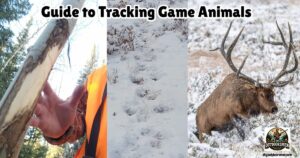
- DIY 4-Step Guide To Field Dressing And Quartering A Deer
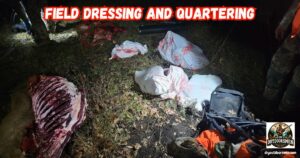
- Night Vision Binoculars For Nocturnal Hunting
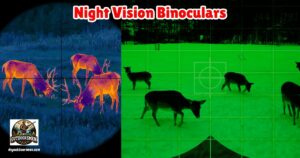
- The Science Behind Camouflage Patterns For Deer Hunting

- Binocular Accessories For Hunters

P.S. Thanks so much for checking out our blog; we really appreciate it. Just so you know, we may receive a commission if you click on some of the links that appear on our site. This helps us keep our content free and up-to-date for everyone. We appreciate your support!
